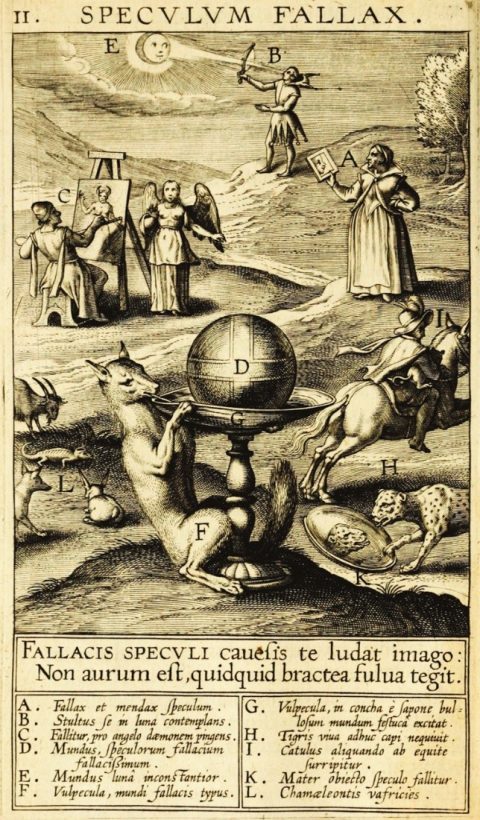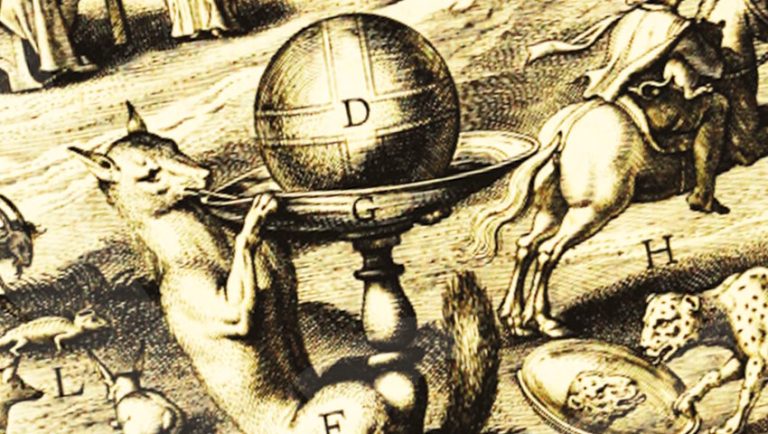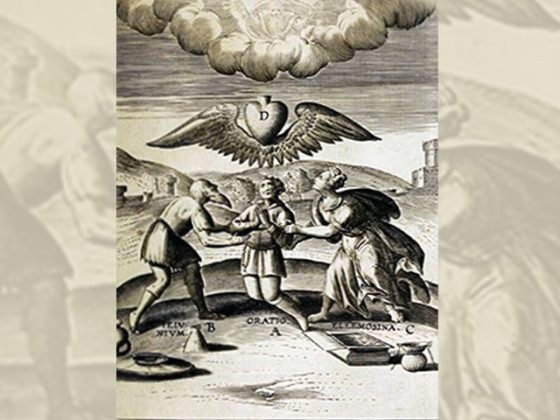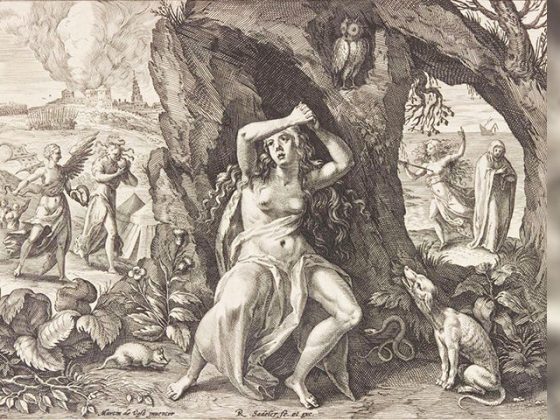Very appreciated readers:
I take the pen to send you some comments related to the profound importance of approaching the TECHNIQUE OF TRUE self-observation and our longings to live within reality and not within fantasies.
Before going into the subject, I want to tell you that this engraving is entitled…
…SPECVLVM FALLAX
─‘The mirror that deceives’─

The engraving is the second in a series of twelve engravings that appear in the book Duodecim specula Deum aliquando videre desideranti concinnata, ‘Twelve Mirrors Properly Arranged for the Person Who Wishes to One Day See God', first published in 1601 in Antwerp. The Flemish engraver and publisher Theodoor Galle (1571-1633) is the author of the drawings.
Approaching the figures in this illustration, we see, first of all, a fox blowing a soap bubble that takes on the shape of the world. The background is full of symbols of earthly deception: a woman looking at herself in a mirror, a jester contemplating the moon through a mirror, a painter depicting an angel as a demon, a chameleon who can disguise himself as a hare, goat or fox, a tiger who does not recognize himself in the mirror and a rider who steals the tiger cub. The engraving has a Latin inscription:
«Fallacis SPECVLI caueris te ludat imago: Non aurum est, quidquid bractea fulua tegit».
‘Don't let the image of the DECEPTIVE MIRROR mock you: not everything that an image hides is gold'.
At the bottom is a caption/inscription/explanation of the scenes depicted in the image, each marked with a letter of the alphabet.
Letters and meanings:
A. Fallax et mendax speculum: ‘A deceitful and lying mirror'.
B. Stultus se in luna contemplans: ‘A fool contemplating himself in the Moon'.
C. Fallitur, pro angelo daemonem pingens: ‘He who paints a demon instead of an angel is mistaken.'
D. Mundus, speculorum fallacium fallacissimum: ‘The world, a deceptive mirror, the most deceptive'.
E. Mundus luna inconstantior: ‘The world is more unstable than the Moon'.
F. Vulpecula, mundi fallacis typus: ‘The little fox, symbol of the deceitful world'.
G. Vulpecvla, in concha e sapone bullosum mundum festuca excitat: ‘Little fox, in a shell a pinch of soap awakens the bubble of the world'.
H. Tigris viua adhuc capi nequiuit: ‘The tiger has not yet been captured alive'.
I. Catulus aliquando ab equite surripitur: ‘Sometimes a rider steals the tiger cub.'
K. Mater obiecto speculo fallitur: ‘The mother ─the tiger mother─ allows herself to be deceived by the mirror'.
L. Chamaeleontis vafricies: ‘The way and means of deceiving the chameleon'.
Trying to delve into what these texts suggest, we will say:
Certainly, friends, as long as we have our Consciousness asleep we will always live deceived by this Mayavic existence, and that hypnotism keeps us tied to the famous Wheel of Samsara. Every person whose psyche is asleep will always be a slave to the wheel of birth and death or the Wheel of Samsara.
Therefore, the mention of the mirror in this engraving is to draw our attention to the illusionism that our psyche manufactures when our senses are fascinated and we never see the realities that are actually present in Nature. Hence what our Avatar, Samael Aun Weor, tells us about learning to transform the impressions we receive throughout our lives so that we do not go on living with images distorted by our psychological aggregates. That way our psyche will always be bottled up and we will never be free.
Certainly, it seems incredible that in those 15th and 16th centuries many occultists dedicated themselves to showing the multitudes the mirage of false conceptions that the “I” is constantly fabricating, distorting the impressions we receive through the five senses.
In this way, when we are told that a fool is contemplating himself in the Moon, we are being warned that our psychology is precisely lunar and in that false psychology we intend to observe ourselves.
Or perhaps when we come to the false conception that someone is a demon even though he is really an angel.
Also those of us who believe that our world is wonderful, when in fact it is dotted with incongruities in all its areas.
And what about the fox that from a soap bubble is capable of creating a world? With a great deal of reason, the V.M. Samael tells us in his treatise entitled IGNEOUS ROSE that the mental body of ordinary people has a form that is similar to that of a fox. The mind is an evil fox that is always creating problems everywhere.
The tiger, an animal considered by many cultures since ancient times to be very cunning, is within us, symbolically speaking, in a state of catalepsy; it is as if dead. That is why we are told: “The tiger has not yet been captured alive.”
And when we have tried to awaken that tiger of self-observation, then suddenly a rider passes by –a psychological aggregate– who steals the cub that could give us the faculty of AWAKENING that we are so much longing for.
Likewise, when the tiger-mother is described as being deceived in front of the mirror, it is because our psychology is in a coma and does not perceive reality.
Finally, every time we have tried to define the chameleon's tricks to avoid being caught in its mischief, all this has also been associated with the changes that we can perceive in the psychological plurality of the rational humanoids that populate our world.
I now add some appropriate sentences to be reflected:
“All power of fancy over reason is a degree of madness.”
Samuel Johnson
“To everything there is a season, a time for every purpose under heaven.”
Ecclesiastes
“That which is born on earth falls on earth, and that which came from heaven returns to heaven.”
Euripides
“To fight against our destiny would be a combat like that of the bundle of ears of corn that would like to resist the sickle.”
Lord Byron
“Fanaticism is to religion what hypocrisy is to virtue.”
Charles Palissot
UT SEMENTEM FECERIS, ITA METES.
─‘As you sow, so shall you reap’─.
KWEN KHAN KHU





